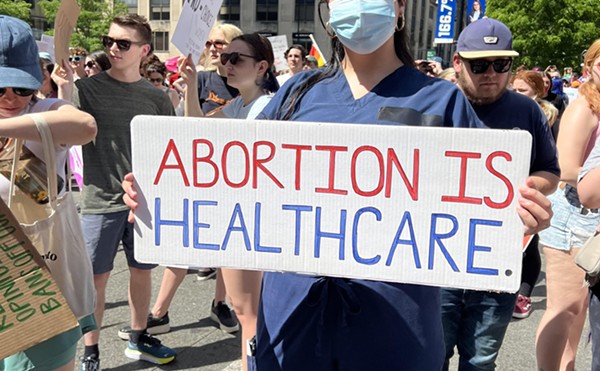|
People who work in the Hamilton County court system have long suspected that defendants aren't always judged by juries of their peers.
Interviewing lawyers, judges and other court workers last year, Cincinnati Community Action Now (CAN) — the race relations commission established after the April 2001 uprising — and the AMOS Project, a coalition of Cincinnati congregations, often heard this impression.
"How that comes about, I'm not sure," says Maureen Keeley, chair of the AMOS Project's Crime and Drug Task Force. "Is it just a gut feeling?"
'Better than I expected'
AMOS Project members asked Hamilton County Jury Commissioner Fritz Meyer to begin collecting the race, ages, education level and income level of jurors. He began in early October 2002.
On the surface, the race and gender makeup of the jury pool is close to matching the county's population as defined by the 2000 U.S. census. The 1,746 people who received jury pay between October 2002 and the end of February 2003 were 81.8 percent white, 16.6 percent African-American and 1.5 percent of other backgrounds.
But not all of the people in the jury pool actually served on juries. All 1,746 people made it to the jury waiting room and therefore were paid for at least one day of service. But once called to courtrooms, some were challenged by attorneys and removed from cases, and others were never called to courtrooms in the first place.
In comparison to the juror pool, the 2000 Census reported the county's population as 72.9 percent white, 23.4 percent black and 3.6 percent of other backgrounds. That means recent jury pools have been about 9 percent more white and about 7 percent less black than the county's population.
"Those numbers are actually slightly better than I expected them to be," says attorney Tim Burke, who examined racial fairness in the court system as part of a Cincinnati CAN committee.
But Burke, who is co-chair of the Hamilton County Democratic Party, believes the jury/ county population differences were still "a significant deviation."
Hamilton County Court Administrator Mike Walton, who is ultimately responsible for juries, disagrees. He says the jury pool is balanced — and, more important, the vast majority of jurors are thoughtful.
"The people who serve on juries are just very conscientious about what they're doing," Walton says. "I rarely hear of jurors misbehaving."
The National Center for State Courts considers jury pools within 20 percent of population figures a reasonable match, according to Tom Shields, president of the Ohio Jury Management Association and jury commissioner for the Franklin County Municipal Court.
But is it fair to compare the jury pool to the county's population, or would another subgroup be fairer?
Almost half of the county's 198,061 black residents live in Cincinnati. The city's population is 58 percent white, 38 percent black and 2.4 percent other races, according to 2000 census figures.
The same imbalance applies to some of the cases handled by the courts, according to Henry Stacey, assignment commissioner for the Hamilton County Court of Common Pleas, which generally handles felonies.
"Without a doubt, I can say that over half of our drug charges come from the city," Stacey says.
That doesn't mean half of the drug defendants do, but it increases the likelihood that city residents are defendants more often than people outside the city — at least in drug cases.
Finding our peers
All this raises some key questions that don't have easy answers: Who are our peers? Are they necessarily of the same race? The same income? Are suburban, wealthy, white jurors more likely to convict urban, poor, black defendants? Or are we more color blind than that?
The list of registered voters is the only source for Hamilton County jurors, as it is in most Ohio counties. Hamilton County had 522,788 registered voters in October 2002; its population is 845,303.
On the average, roughly one-third of the people pulled from the voting rolls actually make a trip to the jury room, according to Meyer. Most convicted felons can't serve on juries, while others had moved or didn't respond to summonses. Those who qualify are eligible to be called downtown to serve for a three-week period.
Registered voters are generally older and more affluent than the entire population. The AMOS Project had focused on expanding the juror pool by using lists of licensed drivers, as do many other states and several mostly rural Ohio counties. But drivers' licenses are only updated every four years in Ohio, which means it would be more difficult to reach people.
In the 1980s, Montgomery County used drivers' licenses as its primary source for jurors. Walton says it was an "unmitigated disaster"; the county had to call many more people than expected to have enough jurors.
Florida ran into similar difficulties a couple of years ago when it switched to a license-based juror system, according to Shields. Drivers were serving on juries in counties where they didn't live, he says.
The drivers' license idea isn't as appealing as it first was, Keeley says.
"The way the system works right now, we're not just ready for it," she says.
Some states use welfare rolls, property tax records, utility records and telephone directories to supplement their jury pools, according to the National Center of State Courts.
Meyer says he is very willing to work with potential jurors who might have schedule conflicts, such as pre-paid vacations.
"We reschedule a lot of people," he says.
By the end of the year, Hamilton and other Ohio counties might have new guidelines on how to make their juries more balanced.
In September 2002 the Ohio Commission on Racial Fairness, created by the Ohio Supreme Court, issued a report on the state court system. Its purpose was to examine the potential for racial bias in the state's courts.
The report didn't include any damning information, but it didn't discount concerns that the courts could do a better job.
"There is the perception, if not the reality, that this standard is not being met in the state of Ohio," the report says.
The report recommended more research into the composition of juries and racial diversity education for jurors, possibly in video form.
The Supreme Court Task Force on Jury Service is looking into ways to measure the fairness of jury populations. Jean Atkin, chair of its subcommittee on jury composition, says the goal is to have a method for analyzing jury populations by the end of 2003.
Ohio's jury system could be fairer, Atkin says, but don't expect the committee to ask for an overhaul.
"It needs to be improved and enhanced but not changed fundamentally," she says. ©





